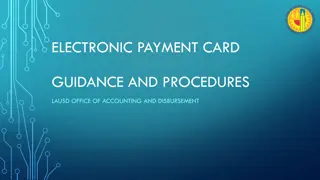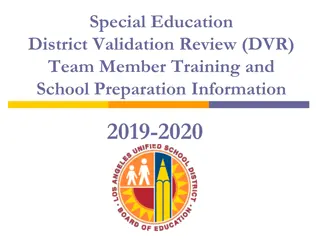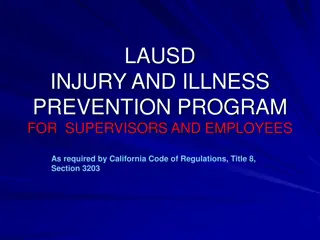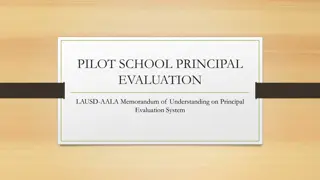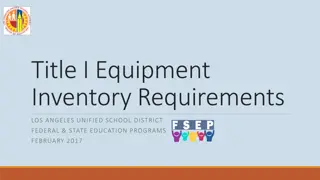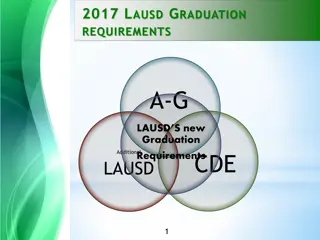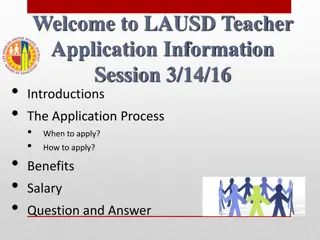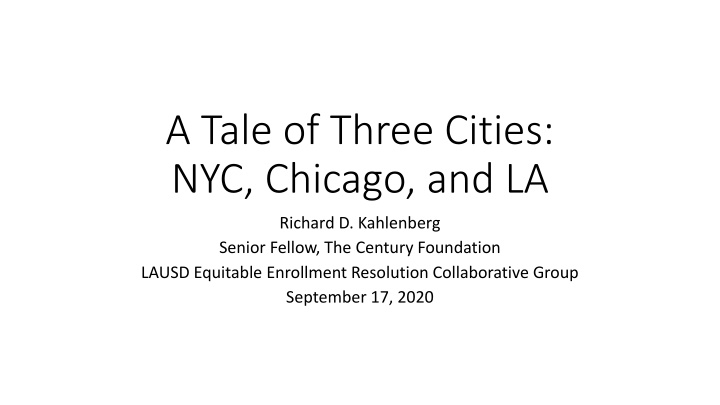
Addressing School Diversity: Insights from NYC, Chicago, and LA
Explore the strategies implemented in New York City, Chicago, and Los Angeles to enhance school diversity and integration. Discover key research findings, recommendations, and outcomes from initiatives led by various advisory groups and educational institutions.
Uploaded on | 0 Views
Download Presentation

Please find below an Image/Link to download the presentation.
The content on the website is provided AS IS for your information and personal use only. It may not be sold, licensed, or shared on other websites without obtaining consent from the author. If you encounter any issues during the download, it is possible that the publisher has removed the file from their server.
You are allowed to download the files provided on this website for personal or commercial use, subject to the condition that they are used lawfully. All files are the property of their respective owners.
The content on the website is provided AS IS for your information and personal use only. It may not be sold, licensed, or shared on other websites without obtaining consent from the author.
E N D
Presentation Transcript
A Tale of Three Cities: NYC, Chicago, and LA Richard D. Kahlenberg Senior Fellow, The Century Foundation LAUSD Equitable Enrollment Resolution Collaborative Group September 17, 2020
Overview New York City School Diversity Advisory Group Chicago Public Schools Possible Lessons for Los Angeles Unified School District
New York City School Diversity Advisory Group Appointed by Mayor Bill de Blasio and Schools Chancellor Richard Carranza Spurred in part by research by UCLA s Gary Orfield finding New York State has the most segregated schools in the country. Chaired by Maya Wiley, New School; Hazel Dukes, NAACP; and Jose Calderon, Hispanic Federation. 45 members included researchers, school principals, teachers, parents, civil rights activists, teacher union leaders, and students. 5 member executive committee took the lead on writing and framing of two reports making recommendations.
Processes Used to Determine NYC recommendations Asked for research on demographics and student outcomes Executive committee and chairs tried to build consensus around research-based recommendations. Decided to break recommendations into two phases: Phase I: Somewhat controversial recommendations around integration (February 2019); Phase II: Highly controversial recommendations around reforms to gifted and talented programs and selective ( screened ) middle schools and high schools (August 2019).
Recommendations 1. Address both racial and socioeconomic integration. 2. NYC should adopt a socioeconomic school integration definition of 30- 70% low income (rather than having all schools reflect district average of 74% low income) based on research on harms of concentrated poverty and benefits of diversity. (Consistent with San Antonio: 93% low-income, yet defining integrated as 50-60% low income). 3. Acknowledge not all NYC schools will meet goal, but can start in 9 of 32 community districts with sufficient diversity. These 9 community districts educate more than 300,000 students. 4. Recommended weighted lotteries in choice schools. Choice without fairness guidelines can actually increase segregation. 5. Recommendations went beyond just student composition and included a number of recommendations to create culturally affirming schools through inclusive pedagogy and curriculum and concerted efforts to increase faculty diversity
Outcomes Mayor de Blasio adopted 62 of 67 recommendations in June 2019. Funded planning grants to community districts to begin work of developing plans. Second report s recommendations to cut back on gifted and talented testing of four year olds and academic screens in middle school proved far more controversial and have not been implemented.
Chicago Process Different process: School District declared unitary so racial quotas for magnet and selective schools came to an end. Chicago wanted to preserve diversity so asked me to help make recommendations in 2008-2009.
Chicago Recommendations 1. Use socioeconomic factors to promote racial and socioeconomic diversity. 2. Six factors: median family income, average level of education attained by parents, percentage of single-family homes, percentage of homes where English is not the first language, percentage of homeowner-occupied residences, and school achievement scores by attendance area. Equally weight and divide into four socioeconomic tiers. 3. Goal was not perfect socioeconomic representation in a district 78% low income. For example, Whitney Young magnet 38% low income.
Outcomes Chicago schools far more racially integrated than many selective magnet schools nationally. Highlighted in 2019 Brookings Institution report as an exemplar. Whitney Young 29% Hispanic, 21% Black, 28% White, and 17% Asian. Politically stable for more than a decade.
Six Implications for LAUSD 1. Come up with a definition of integration (perhaps 30-70% low income) as compared to a goal of making all schools 82% low-income. Racial diversity goals. 2. Add diversity criteria into all choice schools (not just magnets) and conduct weighted lotteries given that system-wide, there are 2.5 applicants for each slot. 3. For diversity, consider socioeconomic status in all schools (as well as race in magnet schools where legally permitted.) 4. Could use Census data employed in Chicago/San Antonio and supplement this with individual level data on parental education, which CA (rare among states) collects. 5. Students composition is not enough. Make recommendations on inclusive pedagogy, curriculum and teaching staff. 6. Add attractive programs to reach a broader cross section of the population. Survey parents on what offerings would be desirable.
New York Resources School Diversity Advisory Group, Making the Grade: The Path to Real Integration and Equity for NYC Public School Students, February 2019. School Diversity Advisory Group, Making the Grade II: New Programs for Better Schools, August 2019. Richard D. Kahlenberg, New York City should set ambitious diversity goals for public schools: New report by panel commissioned by mayor, Washington Post, February 12, 2019. Richard D. Kahlenberg and Maya Wiley, The integration imperative: New York City s public schools must mix student populations far more effectively, February 19, 2019. Richard D. Kahlenberg, NYC school diversity panel recommends ending gifted programs in public schools. One member explains the surprising decision, Washington Post, August 27, 2019.
Chicago and Los Angeles Resources Chicago Chicago Public School, A New Admissions Policy for Magnet, Selective Enrollment and other Options for Knowledge Schools and Programs, Richard D. Kahlenberg, Elite, Separate, Unequal, New York Times, June 22, 2014 Richard V. Reeves and Ashley Schobert, Elite elitist? Lessons for colleges from selective high schools, Brookings Institution, July 31, 2019. Los Angeles Richard D. Kahlenberg, School segregation isn t a big issue in L.A. but it should be. N.Y. and Chicago are working to integrate schools, and L.A. should too. Gonez s proposal is a good first step, LA School Report, August 12, 2019.


